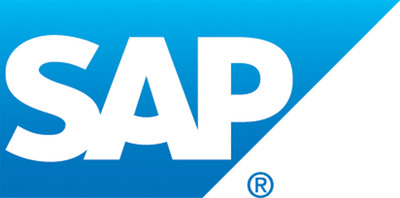

LAS VEGAS, Oct. 2, 2018 /PRNewswire/ -- SAP SE (NYSE: SAP) today announced new cloud native development, deployment and lifecycle management capabilities in SAP® Cloud Platform. These new features empower enterprises and developers with more business-focused tools to succeed in the digital economy. SAP Cloud Platform offers customers a smooth, fast and easy transition to the cloud and opens up limitless innovation potential. This announcement was made at the SAP TechEd conference taking place October 2–5, 2018, in Las Vegas.

"Our new SAP Cloud Platform capabilities are focused on accelerating the delivery of new business application functionality," said Björn Goerke, president, SAP Cloud Platform, and chief technology officer at SAP. "This will enable our customers to better serve their customers and innovate in their markets. SAP's investment in open source, business services and other technologies will help developers deploy innovative business applications and other game-changing apps to make their companies intelligent enterprises."
New Cloud Business-Focused Development
With SAP Cloud Platform SDK for iOS, S.A. San Miguel, an Argentina-based citrus company, has created a mobile app that management and workers can use to plan, list, track and update grove activities.
"With SAP Cloud Platform, we are delivering apps that eliminate paperwork and other manual processes," said Eduardo Martinez, chief information officer, S.A. San Miguel. "This empowers our employees in the groves to record data on the spot and helps us react immediately to changes."
New Cloud Business-Focused Deployment
SAP Cloud Platform is now delivering enterprise-ready, event-driven serverless business application deployment innovation with three integrated services based on Kubernetes, Knative and Kubeless. With these new services, customers can reimagine and evolve crucial business processes into event-sensing applications:
These services provide an easily consumed serverless environment and are billed as microservices, designed to speed deployment of event-based cloud applications.
"As enterprises build next-gen applications to support digital transformation of their business and workforce, many are turning to adopt platform-as-a-service," said Holger Mueller, principal analyst and vice president, Constellation Research. "Open source standards-based platforms have become the choice for CxOs, with Cloud Foundry and Kubernetes as the most prominent winners. CxOs also want to see their team's existing skills leveraged, so the availability of programming languages that developers are comfortable and experienced with is a key advantage to PaaS platforms."
New Cloud Business-Focused Lifecycle Management
Kubernetes as a service for SAP Cloud Platform, private beta, will offer customers the deployment option of containerized business application workloads in a Kubernetes environment. This will give customers flexibility and ease in building robust, container-based business applications that are easily deployed and managed in their public cloud of choice. This is planned to be GA in 2019.
SAP recently announced that customer adoption for SAP Cloud Platform has reached over 10,000 customers. For more details on SAP Cloud Platform, read the interview with Björn Goerke.
Visit SAP Cloud Platform online. Follow SAP Cloud Platform on Twitter at @sapcp.
Visit the SAP News Center. Follow SAP on Twitter at @sapnews.
About SAP
As market leader in enterprise application software, SAP (NYSE: SAP) helps companies of all sizes and industries run better. From back office to boardroom, warehouse to storefront, desktop to mobile device – SAP empowers people and organizations to work together more efficiently and use business insight more effectively to stay ahead of the competition. SAP applications and services enable more than 404,000 business and public sector customers to operate profitably, adapt continuously, and grow sustainably. For more information, visit www.sap.com.
Any statements contained in this document that are not historical facts are forward-looking statements as defined in the U.S. Private Securities Litigation Reform Act of 1995. Words such as "anticipate," "believe," "estimate," "expect," "forecast," "intend," "may," "plan," "project," "predict," "should" and "will" and similar expressions as they relate to SAP are intended to identify such forward-looking statements. SAP undertakes no obligation to publicly update or revise any forward-looking statements. All forward-looking statements are subject to various risks and uncertainties that could cause actual results to differ materially from expectations. The factors that could affect SAP's future financial results are discussed more fully in SAP's filings with the U.S. Securities and Exchange Commission ("SEC"), including SAP's most recent Annual Report on Form 20-F filed with the SEC. Readers are cautioned not to place undue reliance on these forward-looking statements, which speak only as of their dates.
© 2018 SAP SE. All rights reserved.
SAP and other SAP products and services mentioned herein as well as their respective logos are trademarks or registered trademarks of SAP SE in Germany and other countries. Please see https://www.sap.com/copyright for additional trademark information and notices.
For customers interested in learning more about SAP products:
Global Customer Center: +49 180 534-34-24
United States Only: 1 (800) 872-1SAP (1-800-872-1727)
For more information, press only:
Julia Fargel, SAP, +1 (650) 276-8964, Julia.Fargel@sap.com, PT
SAP News Center press room; press@sap.com
Marki Conway, PAN Communications, +1 (617) 502-4338, mconway@pancomm.com, ET
Please consider our privacy policy. If you received this press release in your e-mail and you wish to unsubscribe to our mailing list please contact press@sap.com and write Unsubscribe in the subject line.
SOURCE SAP SE
